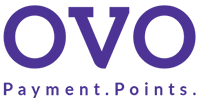Progressive Jackpot
IDR
Game Terpopuler
Slot
Casino
Promosi
MPO777: Home
Home






















HATI-HATI PENIPUAN MENGATAS NAMAKAN SITUS MPO777
KONFIRMASI DEPOSIT HANYA MELALUI LIVECHAT, TELEGRAM DAN WHATSAPP MPO777

By entering this website, you acknowledge and confirm:
